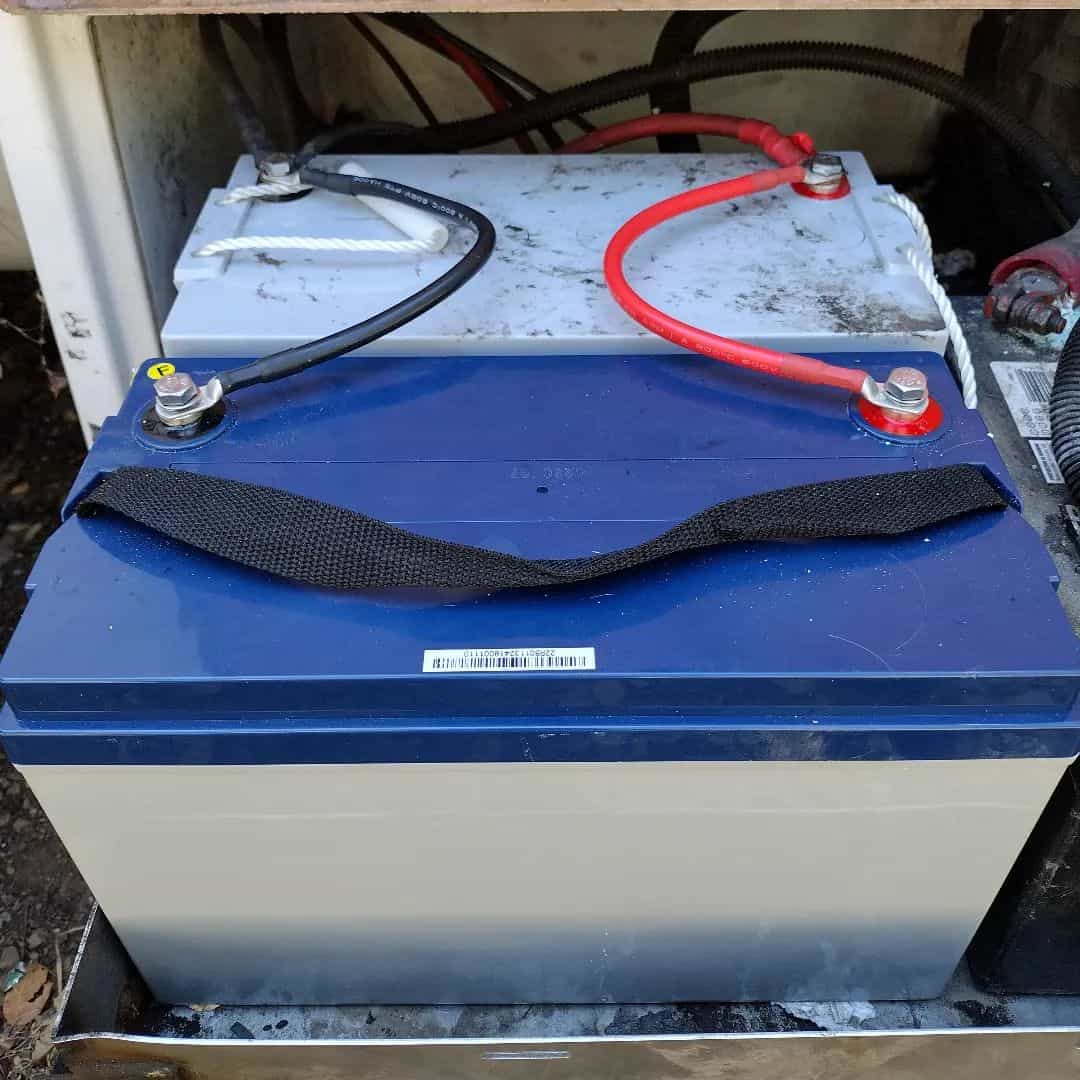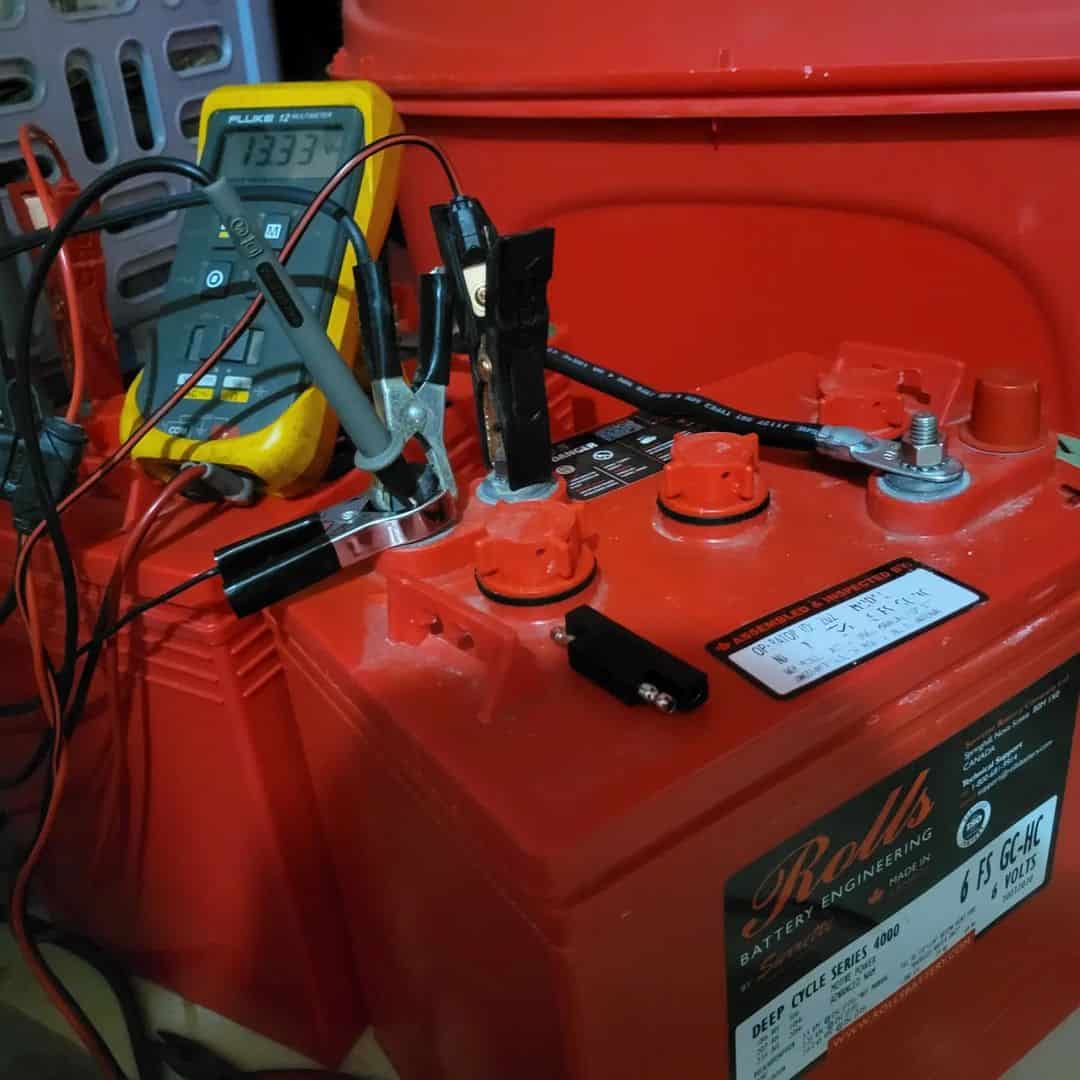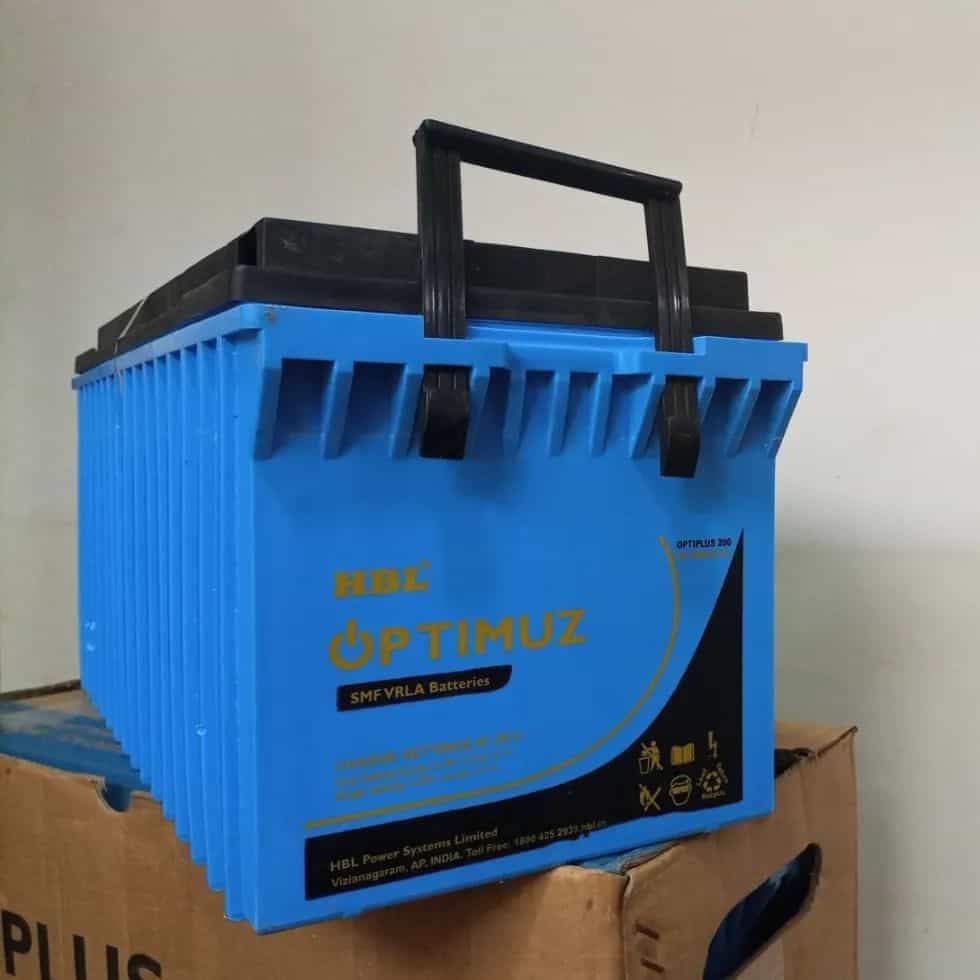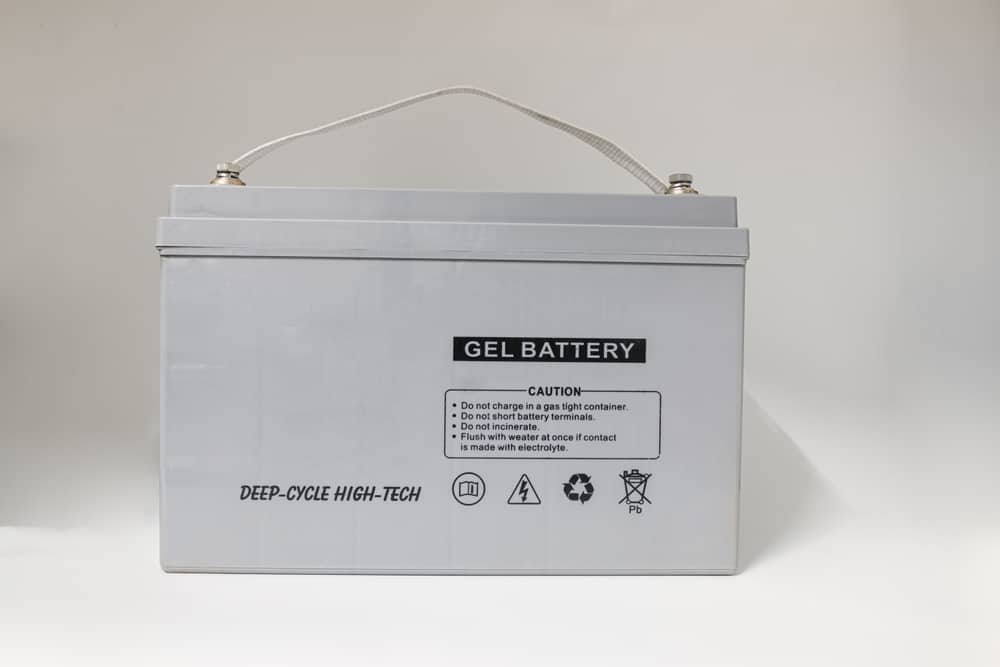Are you looking for the perfect solar panel setup to charge your deep-cycle battery? Then, you’ll need the right number of watts before you can get started.
With so many types of solar panels and batteries on the market, it can be difficult to know which ones will work best together. The math can be tricky, but It’s important to learn about watt calculations and end up with a pair that delivers maximum energy efficiency.
In this article, we’ll break down exactly how many watts you need to safely and effectively charge a deep-cycle battery without risking damage, as well as provide some useful tips for choosing the right components for your off-grid setup.
Table of Contents
- Understanding the Basics of Solar Panels and Deep-Cycle Batteries
- The Number of Watts Solar Panel Needed To Charge Deep Cycle Batteries
- Factors that Affect the Number of Watts Needed
- How to Calculate The Number of Watts needed
- Choosing the Right Solar Panel
- How to Charge Deep Cycle Batteries Using Solar Panels
- Conclusion
Understanding the Basics of Solar Panels and Deep-Cycle Batteries
Before we dive into determining the watts needed for your solar panel, it’s important to understand how solar panels and deep-cycle batteries work.
Solar Panels:
Solar panels, also known as photovoltaic (PV) panels, convert sunlight into electricity. They are made up of photovoltaic cells containing semiconductors that absorb photons from the sun and convert them into electrons. These electrons flow through the panel, creating a current of electricity. The amount of electricity produced by a solar panel is measured in watts.
Deep Cycle Batteries:
Deep cycle batteries are designed to be repeatedly discharged and recharged. They are commonly used in solar power systems, as they can store the electricity produced by the solar panel for later use.
When the solar panel generates more electricity than needed, the surplus is saved in the deep-cycle battery. This stored energy is then utilized when the solar panel cannot produce enough power to meet the requirement.
The Number of Watts Solar Panel Needed To Charge Deep Cycle Batteries
Most batteries charge at a rate of 10 watts per hour, so if you’re looking to charge a 100Ah battery in 10 hours, you’ll need a 1000-watt solar panel. If you want to charge the battery in 6 hours, you’ll need a 600-watt solar panel. However, several factors affect the watts needed, including location, weather conditions, and the type of battery and solar panel used.
Factors that Affect the Number of Watts Needed
- Battery Capacity: Your deep cycle battery’s amp-hour (Ah) capacity will tell you how much power it can store. The bigger the capacity, the more electricity you can save and the more wattage you’ll need in your solar panel for charging.
- Location and weather conditions: The amount of energy the solar panel can generate is largely determined by the strength of the sunlight. So, if you live in a place with peak sun hours, you can likely get away with a smaller solar panel than in an area with more cloud coverage.
- Type of solar panel: The amount of electricity a solar panel produces is determined by its efficiency, measured as a percentage. A solar panel with a higher efficiency rating will generate more power with less wattage, making it a great choice for charging your battery.
- Power usage: The power requirements for your appliances and gadgets will determine the wattage of your solar panel. The more energy you need, the higher the battery’s wattage.
- Autonomy days: The duration you’d like access to the energy stored in the battery will influence the number of watts needed for charging. The longer the desired autonomy, the higher the wattage needs to be.
How to Calculate The Number of Watts needed
You will need to know your average daily power usage, the number of days of autonomy you want, and the number of hours of sunlight you expect to receive.

For example, if your average daily power usage is 50 watts, you want 3 days of autonomy and expect 5 hours of sunlight per day. You need a solar panel with a minimum capacity of 750 watts (50 x 3 x 5 = 750).
Here’s a table that shows the number of watts needed for different scenarios:
| Battery Capacity (Ah) | Average Daily Power Usage (Watts) | Autonomy Days | Hours of Sunlight | Minimum Solar Panel Wattage |
| 100 | 50 | 3 | 5 | 750 |
| 200 | 100 | 3 | 5 | 1500 |
| 300 | 150 | 3 | 5 | 2250 |
| 400 | 200 | 3 | 5 | 3000 |
As you can see, the number of watts needed increases as the battery capacity, power usage, and autonomy days increase.
It’s also important to note that these calculations are based on a standard solar panel efficiency of 15%. If you choose a higher-efficiency solar panel, you will need fewer watts to charge the same battery.
Choosing the Right Solar Panel
Several types of solar panels are available on the market, each with its unique characteristics. Here are the different types with their pros and cons
- Monocrystalline solar panels: Although they come with a higher price tag, if you’re looking for supreme efficiency and longevity, monocrystalline solar panels are the way to go. They have an efficiency of between 15-20%
- Polycrystalline solar panels: Made from multiple crystals of silicon and are less efficient than monocrystalline panels but are more affordable. They have an efficiency of 12-15%
- Thin-film solar panels: If budget is your top priority, then thin-film solar panels are the choice for you. These panels are made with a thin layer of semiconductor material and are the most affordable option, even if they are not the most efficient.

Factors to Consider When Choosing a Solar Panel to Charge Your Deep Cycle Battery
- Efficiency: As discussed earlier, efficiency is measured in percentage and determines how much electricity a solar panel can produce.
- Size: The solar panel size will affect how much electricity it can produce and how much space it will take up.
- Durability: A solar panel’s durability is important, especially if exposed to harsh weather conditions.
- Cost: The cost of a solar panel should also be considered, as it can vary greatly depending on the type and size of the panel.
How to Charge Deep Cycle Batteries Using Solar Panels
- First, ensure that the solar panel is installed in a location that receives the most sunlight. This can be done by installing it on a roof, a wall, or a stand on the ground.
- Connect the solar panel to the charge controller using the right wiring. The charge controller works to make sure the electricity from the solar panel is sent to the battery in a safe and controlled manner.
- Connect the charge controller to the battery using the appropriate wiring. Ensure that all connections are secure.
- Turn on the charge controller and set it to the charging settings for your specific deep-cycle battery. Charge controllers usually have several charging modes, such as Bulk, Absorption, Float, and Equalization.
- Allow the solar panel to charge the battery appropriately. The charging time will depend on the battery capacity, the solar panel wattage, and the hours of sunlight.
- Monitor the battery voltage and capacity regularly and adjust the charge controller settings if necessary.
- Once the battery is fully charged, disconnect the solar panel from the charge controller and the battery to prevent overcharging.
- Repeat the charging process to maintain the battery’s charge.

Maintaining the Solar Panel and Battery System
- Check the system’s wiring and connections regularly to ensure they are secure.
- Keep the solar panel clean and free of debris
- Test the battery’s voltage and capacity regularly
- Check the charge controller settings to ensure they are optimal
- Keep an eye on the system’s performance and troubleshoot any issues as they arise.
Troubleshooting
- Low battery voltage: This could be the result of a few different things, like a solar panel that isn’t working right, not taking proper care of the battery, or days with not much sunshine.
- Battery not charging: A malfunctioning solar panel, a faulty charge controller, or a broken connection between the solar panel and the battery are usually the causes of a battery not charging
- The system not producing enough electricity: This can be caused by a malfunctioning solar panel, a lack of sunlight, or a failure in the wiring or connections.
Conclusion
Determining the number of watts needed in a solar panel to charge a deep-cycle battery is an important step in creating a reliable and efficient power system.
However, it’s important to note that these calculations are based on average conditions, and it is always recommended to consult a professional or the manufacturer for further guidance and to ensure that you have the right size of a solar panel for your specific situation.
Here are some key points to keep you on track
- The number of watts needed in a solar panel to charge a deep-cycle battery will depend on the capacity of the battery and the amount of electricity you plan to use.
- The efficiency of the solar panel, location, and weather conditions all play a role in determining the number of watts needed.
- Proper installation and maintenance are crucial for ensuring that your power system is reliable and efficient.
We hope this blog post has been informative and helpful. If you have any questions or want further information, please feel free to comment below.
